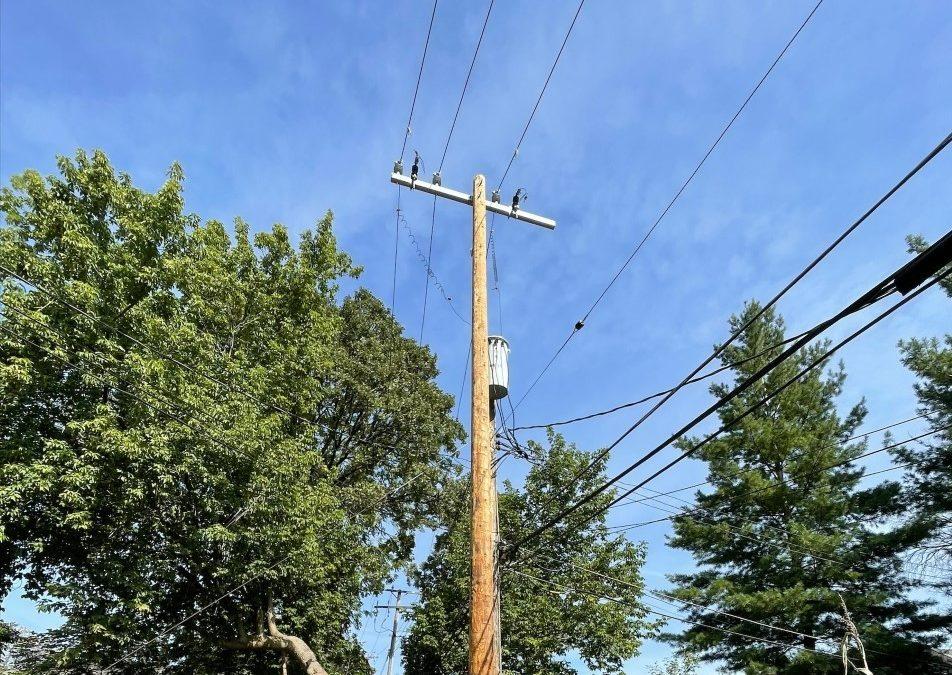Utility poles are a very common sight throughout Michigan and most parts of the world. You see them every time you go outside. Just in our service territory alone, we have more than one million poles helping us distribute electricity to nearby buildings and homes. But do you know what equipment is on a pole? And how all the equipment works together to deliver safe and reliable power?
Starting from the top of the pole, there are three main power lines, along with a horizontal cross arm. Each of the three lines at the top distribute the highest voltage levels. The cross arms help divide higher voltage lines that feed the transformers, as well as support the power lines.
Looking further down, some utility poles will have transformers. Transformers are the grey cylinder-shaped objects located near the top of the pole, sitting between the high and low voltage lines. They are responsible for taking high voltage electricity and stepping it down to a lower voltage so that it can be safely distributed to your home. Standard homes use voltages between about 120 volts to 240 volts. Large appliances such as air conditioning, stoves, washing and drying machines need about 240 volts to work properly. Basic appliances that use an outlet only need about 110 volts. Transformers enable the voltages to remain within this range. One transformer is enough to power one or several homes depending on the size of the transformer. That is why you might not see a transformer on every single pole.
The thick black lines near the middle of utility poles are communication wires. The lines are different sizes, with the biggest size being the main wire. The main line can carry hundreds of communication wires inside of them. Businesses such as AT&T and Comcast are responsible for these wires. DTE has an agreement with these businesses to share poles to extend services to customers.
You may notice DTE in your neighborhood inspecting, repairing or replacing the poles and equipment that serve your area. We regularly do this work to ensure you have the power you need, when you need it.
Make sure to regularly check our community pages to learn more about what’s going on in your neighborhood. You can also follow DTE on Facebook and Twitter for even more updates and information.
